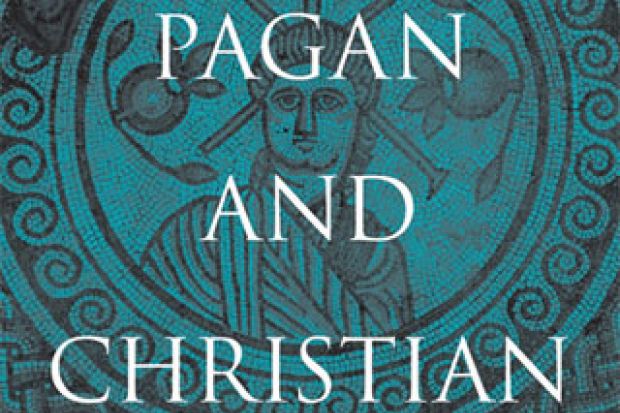In the taxonomies of personality so popular among the self-help-reading breakfast set, the sentimental iconoclast is often overlooked. Part contrarian, part romantic, the sentimental iconoclast is robustly represented among the historical crowd. He is drawn to those concepts and individuals who fought valiantly against the oppressive tyranny of the zeitgeist. The pin-up boy for these provocateurs is Julian the Apostate, the 4th-century Roman emperor and champion of the so-called “last pagans”, who made a last-ditch effort to revivify the traditional religious practices of Rome when all seemed lost. Like intellectual underdog Trotsky, Julian and the pagan holdouts were, to the sentimental iconoclast, mysterious heroes in their own time.
In Between Pagan and Christian, eminent classicist Christopher Jones sets out to burst some idealist bubbles. He peeks behind the curtain of the mythology of the last pagans and asks - without denying the reality of pagans in the newly Christian world - to what extent our understanding
of pagans and paganism is a construction that is ultimately the product of Christian rhetoric. There were pagans, but how did the discourse about paganism function in various arenas in the newly Christian world? How much overlap was there in practice and worldview between pagans and Christians?
What follows is a carefully plotted tour through late antique discourse about paganism from Constantine onwards by means of discourse about idolatry, sacrifice, godhead and conversion. Jones is geographically and linguistically sensitive, being attentive to the distinctions between East and West, Greek and Latin, town and country.
This is important subject matter and a worthwhile read, and Jones is peerless in his discussions of the 4th century and beyond. For those interested in details as well as broad strokes, he is just the man to show us exactly how fuzzy the notion of paganism was in the ancient world. Engaging anecdotes - for instance about the conversion of various ancient figures - punctuate a book replete with linguistic definitions.
But when he refers to the world before Constantine, Jones’ erudition and constructivist interests seem to slip. Not only are the facts of the 1st century idealistically borrowed from traditional ecclesial histories and the Acts of the Apostles, his interests in historical constructivism evaporate. Indeed, the very first sentence of the book (as well as that of the second chapter) describes the Apostle Paul as a “Jewish convert to Christianity”. But no serious New Testament scholar would describe the first generation of Jesus followers as Christians. Paul certainly never used the word, nor would he have heard of the concept. He was a Jew who believed the Messiah had come. The word Christian simply did not exist.
Similar issues crop up in discussions of the use of the term Ioudaioi (commonly translated as “Jews”) and ethnikos (gentile). Jones rightly notes the manner in which the word Ioudaioi functioned to exclude members of the Jesus movement, but errs in attributing this to “the New Testament”, as if the authors therein had a consistent opinion on the matter. And the rhetorical power of a “new race (ethnos)”, appealed to by 2nd- and 3rd-century Christians, goes undiscussed. The diversity and texture of the various forms of early Christianity are forced into a sweeping narrative of change and ascent. Jones’ inscription-based observation about a new Christian understanding of the afterlife ignores the hotly contested debate about the Resurrection that plagued the early Church. For a scholar participating in a broader discussion about the invention of identity, Jones has a very romantic notion of Christian origins.
Perhaps part of the problem is methodological. When it comes to describing constructed worlds and the power of language in the cultural imaginary, one can destabilise only so many concepts. We could speak, perhaps, of the manner in which the key terms Christian, Jew and pagan are co-produced, but if we slacken the ties that bind rhetoric to reality, we run the risk of describing castles in the clouds. Unshackling every identity marker from its purported referent could leave us adrift, floating up into the pre-linguistic world of semiotics.
This is hardly Jones’ fault. And if there’s one thing worse than a romanticist who cannot be quiet, it’s an expert who cannot say anything at all.
Between Pagan and Christian
By Christopher P. Jones
Harvard University Press, 224pp, £29.95
ISBN 9780674725201
Published 26 March 2014
Register to continue
Why register?
- Registration is free and only takes a moment
- Once registered, you can read 3 articles a month
- Sign up for our newsletter
Subscribe
Or subscribe for unlimited access to:
- Unlimited access to news, views, insights & reviews
- Digital editions
- Digital access to THE’s university and college rankings analysis
Already registered or a current subscriber? Login





